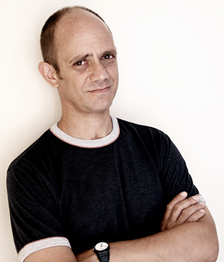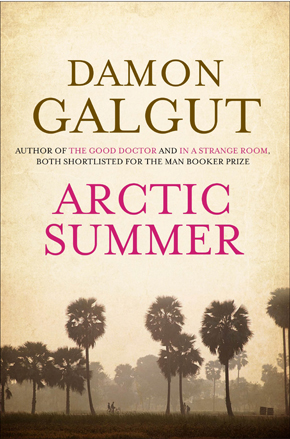A passage to Forster
by Damon GalgutIn contrast to his earlier novels, which he produced in a flurry between 1905 and 1910, E.M. Forster took eleven years to write A Passage to India. For nine of those years he was blocked, unable to move forward. He started it after his first visit to India in 1913 and was only able to complete it when he’d returned for a second time in 1922. It was to be his last novel, although he lived for another 45 years.
In my new book, Arctic Summer, I have tried to tell the story of everything Forster went through in his struggle to write his masterpiece. Accordingly, this list can only begin by mentioning:
1. A Passage to India
Forster fans are mostly divided between those who rate Howards End or Passage as his greatest achievement. I am firmly in the latter camp. The book is phenomenal and it astounds me that more people haven’t read it.
2. Letter to Mohammed
In Egypt during the First World War, where he worked for the Red Cross, Forster had his first sexual affair, with a young tram conductor called Mohammed el Adl. It was a significant relationship for Forster, representing for him the triumph of human affection over the barriers of class and race and income. Very sadly, el Adl died of consumption just a few years later. Forster wrote a long letter to his friend, never meant for publication, over the decade that followed his death. This document appears only in the Abinger edition of Forster’s Egyptian writings (Pharos and Pharillon and A Guide to Alexandria). It is a heartbroken and heartbreaking testament, painfully honest and brimming with emotion. And if this appeals, you might also like…
3. The poems of Cavafy
… famous now in the West largely due to Forster’s efforts. When they first met in Alexandria, Cavafy was well regarded locally, but unknown elsewhere. On his return to London, Forster worked tirelessly to get the poems translated and printed, all without much help or interest from Cavafy himself. By now, of course, there are several translations available, the newest of which are by Daniel Mendelsohn.
4. Kanaya
Also not intended for publication, this is utterly atypical of Forster’s writings in that it’s a very candid sexual account of his shenanigans in the court of Dewas State Senior, where he worked as Private Secretary to the Maharajah. It’s thought he might have written it to be read aloud to the Bloomsbury Memoir Club, where they tried to outdo each other with carnal frankness. That reading never happened, but the fragment survives, again only in the Abinger edition of The Hill of Devi and Other Indian Writings.
5. Hindoo Holiday by J.R. Ackerley
One of the most delightful of all Indian memoirs from the Raj. Ackerley was a friend of Forster’s and was sent, at his instigation, to be Private Secretary to the Maharajah of Chhatarpur, whom Forster had encountered on his travels. Ackerley is utterly forthright about his sexual exploits, as well as a brilliant observer of all the fabulous doings at the royal court.
6. Beethoven’s Fifth Symphony
Forster was an enthusiastic if amateur piano player for most of his life and was very fond of Beethoven. The Fifth Symphony was cited by Forster in Aspects of the Novel as an example of a creative work where something was heard once the music had ceased, an effect he aspired to in his writing.
7. The Barabar Caves
This is a suggestion for any travellers to India. The originals for what became the Marabar Caves in the novel, they are close to the town of Patna in Bihar, which Forster described to his mother as “a place horrible beyond words.” Unfortunately, it hasn’t improved since then, but Bodh Gaya – where the Buddha supposedly attained enlightenment – is close by, and makes a much nicer base for anybody interested in an excursion. The caves are in bandit country, and best not visited alone, but it’s fairly easy to find a guide and transport in Bodh Gaya.
8. Charleston Farmhouse
Situated in East Sussex and open to the public, it was central to the Bloomsbury group. Charleston was the country house of Vanessa Bell and Duncan Grant and the regular haunt of Maynard Keynes, Roger Fry, T.S. Eliot, Lytton Strachey and others, including Forster. Not far away, and easily visited on the same outing, there is…
9. Monk’s House
… in the village of Rodmell. Leonard and Virginia Woolf’s rural retreat from 1919, and preserved intact, it was also the place from which Virginia set out to drown herself in 1941. Forster acknowledged Leonard Woolf as an important help in the completion of A Passage to India, while he and Virginia were literary rivals as well as friends.
10. The poems of A.E. Housman
Forster was very taken by Housman’s work, perhaps because of its latent homosexual undertones, and carried a copy of A Shropshire Lad with him on a walking tour of Shropshire in 1907. Soon afterward, Forster wrote a letter to Housman to express his “obscure admiration”, and was hurt when he got no reply. The poems remain, however, and are especially satisfying when read outdoors.
 Damon Galgut was born in Pretoria in 1963 and lives in Cape Town. His books include Small Circle of Beings, The Beautiful Screaming of Pigs, The Quarry, The Good Doctor, The Impostor and In a Strange Room. The Good Doctor was shortlisted for the Man Booker Prize, the Commonwealth Writers’ Prize and the Dublin/IMPAC Award, The Impostor was also shortlisted for the Commonwealth Writers’ Prize and In a Strange Room was shortlisted for the Man Booker Prize. Arctic Summer is published by Atlantic Books in hardback and eBook. Read more.
Damon Galgut was born in Pretoria in 1963 and lives in Cape Town. His books include Small Circle of Beings, The Beautiful Screaming of Pigs, The Quarry, The Good Doctor, The Impostor and In a Strange Room. The Good Doctor was shortlisted for the Man Booker Prize, the Commonwealth Writers’ Prize and the Dublin/IMPAC Award, The Impostor was also shortlisted for the Commonwealth Writers’ Prize and In a Strange Room was shortlisted for the Man Booker Prize. Arctic Summer is published by Atlantic Books in hardback and eBook. Read more.


